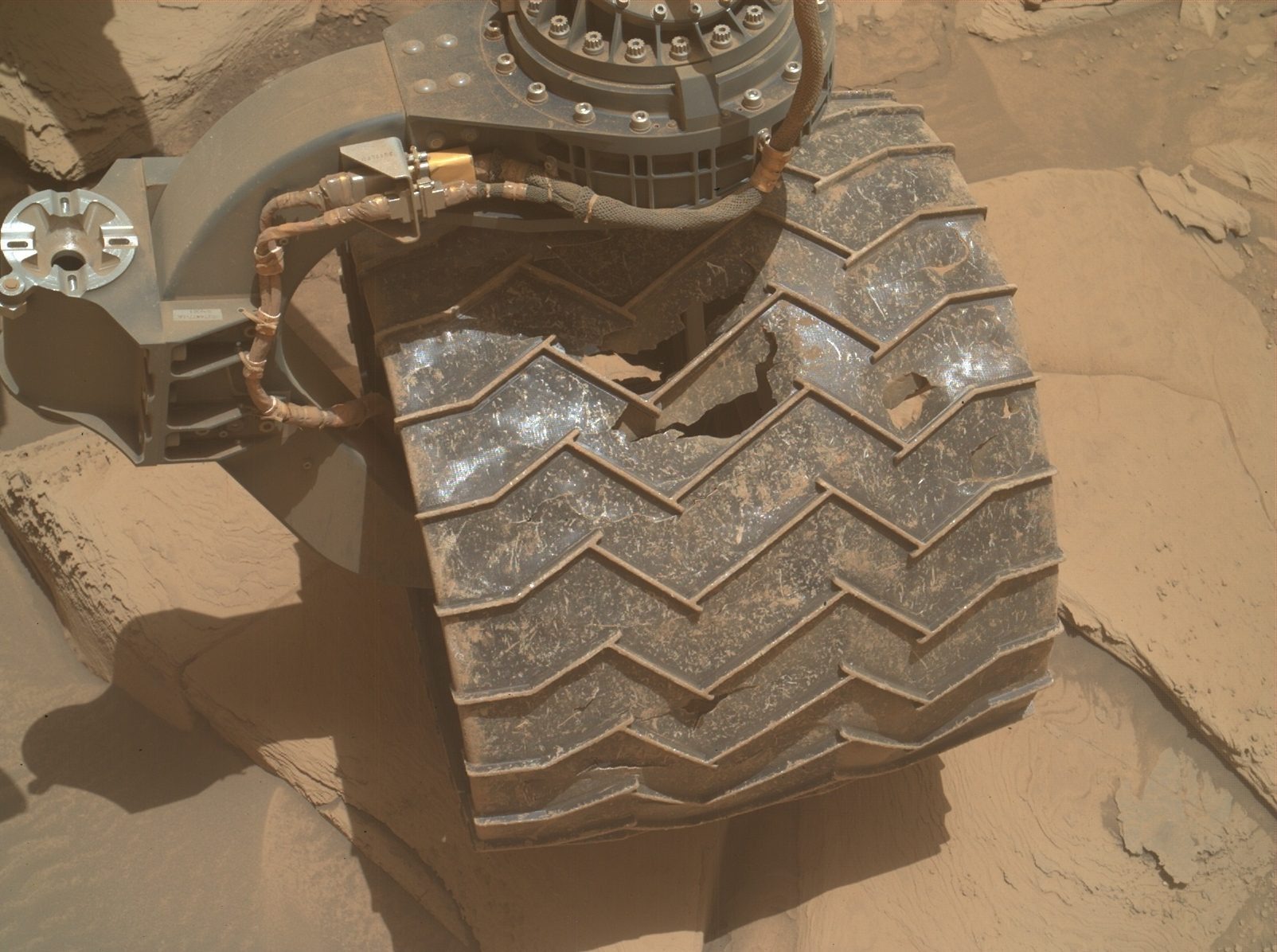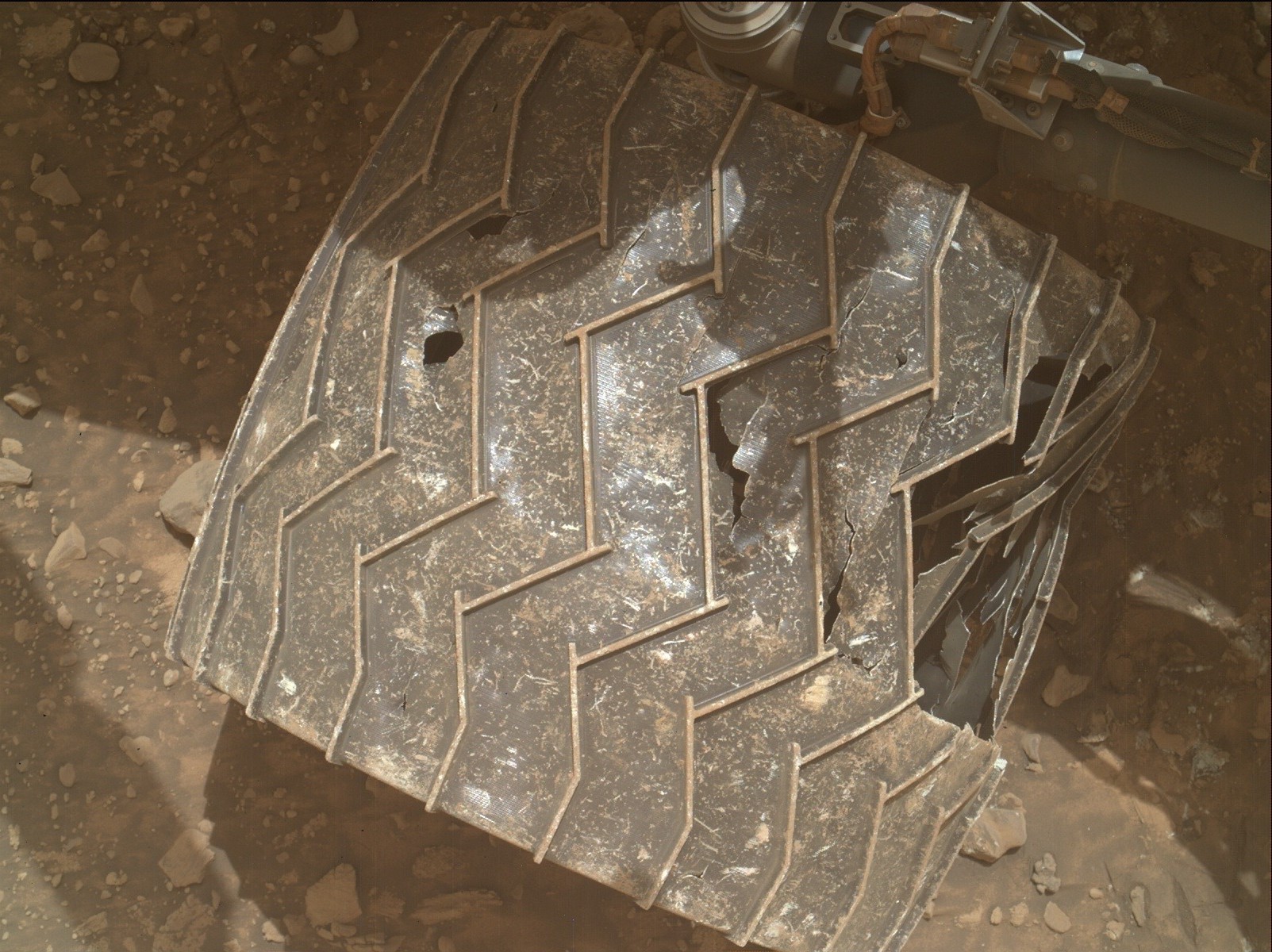NASA’s Curiosity rover has been exploring the surface of Mars for more than 4,400 Earth days, having started its mission back in 2012. It landed in Gale Crater, a probable remnant of an ancient lake, and has traveled more than 32 kilometers in that time. The severe conditions on Mars have significantly damaged its wheels. Recent images taken with the MAHLI camera showed large potholes on the rover’s middle right wheel.

Despite the damage, Curiosity continues to operate. NASA engineers regularly check the condition of all six 50 cm diameter wheels made of solid aluminum. The wheels suffered significant damage due to traveling over rocky terrain, especially in the first year of the mission when the rover crossed areas with sharp rocks. Subsequently, NASA updated the software to optimize the rover’s wheel speed and reduce wear and tear.
Special “spikes” on the wheels help Curiosity move better over loose soil, and perforations are used to measure wear and tear. While scientists recognize that the wheels are suffering significant damage, they are confident that they will last for several more years.

Curiosity continues to impress. In July 2024, one of the wheels accidentally discovered an extremely rare formation: a rock with pure sulfur, which surprised scientists. They compared it to the discovery of an oasis in the desert, because nothing like this was supposed to exist on Mars.
The question remains how long the rover’s wheels will survive, but its contribution to science has already exceeded expectations.
Earlier we reported on how a rock got stuck in the wheel of the Curiosity rover.
According to NASA


